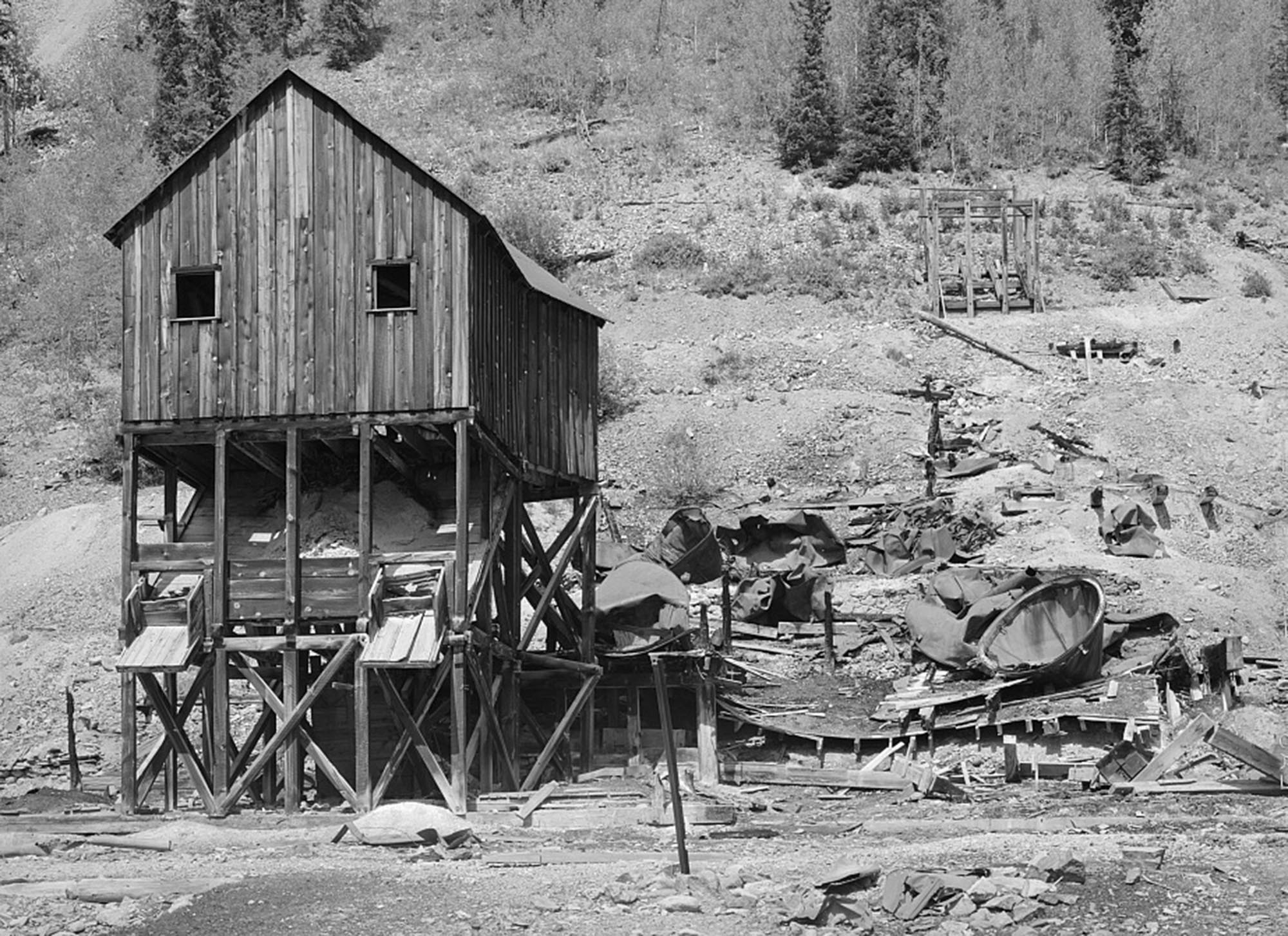Abandoned Gold Mines: Exploring The Dangers Of Toxic Contamination

Table of Contents
Types of Toxic Contamination from Abandoned Gold Mines
Abandoned gold mines represent a significant source of environmental pollution. The legacy of past mining practices often leaves behind a cocktail of toxic substances that continue to contaminate the surrounding environment for decades, even centuries. Three primary types of toxic contamination are prevalent: heavy metal contamination, acid mine drainage (AMD), and cyanide contamination.
Heavy Metal Contamination
Gold ore frequently contains heavy metals like arsenic, mercury, lead, and cadmium. These metals are released into the environment during gold extraction and processing, and their presence in abandoned mine tailings and surrounding areas poses a considerable threat. These heavy metals contaminate water sources through leaching, infiltrate the soil, and can even become airborne as dust particles.
- Arsenic: Causes skin lesions, cardiovascular disease, and various cancers.
- Mercury: Damages the nervous system, particularly in developing fetuses and young children. It bioaccumulates in the food chain.
- Lead: Leads to developmental delays in children, neurological damage, and reproductive problems.
- Cadmium: Causes kidney damage, bone disease, and increased risk of certain cancers.
The abandoned gold mines of California's Sierra Nevada mountains, for example, have been documented to have significant levels of mercury contamination affecting local water supplies.
Acid Mine Drainage (AMD)
Acid mine drainage (AMD) is a severe environmental problem resulting from the oxidation of pyrite (iron sulfide) present in many gold-bearing rocks. Exposure of pyrite to air and water initiates a chemical reaction that produces sulfuric acid, lowering the pH of surrounding water sources. This acidic water then leaches heavy metals from the surrounding rocks and sediments, exacerbating the contamination problem.
- AMD drastically lowers water pH, making it unsuitable for aquatic life.
- It mobilizes and transports heavy metals, increasing their bioavailability and toxicity.
- AMD can damage infrastructure, such as pipelines and bridges, through corrosion.
- AMD remediation often involves neutralizing the acidity and removing dissolved metals.
Effective AMD remediation often involves various strategies, including passive treatment systems like constructed wetlands.
Cyanide Contamination
Cyanide, a highly toxic chemical, was and continues to be used extensively in gold extraction. Although modern mining practices emphasize responsible cyanide management, abandoned mines pose a significant risk of cyanide leaching from improperly managed tailings ponds. This poses an immediate threat to human health and the environment.
- Cyanide poisoning can cause respiratory failure and death within minutes of exposure.
- Chronic exposure to low levels of cyanide can lead to neurological problems and other health issues.
- Strict regulations and responsible practices govern cyanide use in modern gold mining operations. However, legacy mines often lack these safeguards.
Understanding the potential for cyanide release from abandoned mine sites is crucial for risk assessment and remediation efforts.
Health Risks Associated with Abandoned Gold Mine Contamination
The consequences of abandoned gold mine contamination are far-reaching, affecting both human health and the environment.
Human Health Impacts
Exposure to heavy metals and other toxins from abandoned gold mines can cause a wide range of severe health problems. Exposure routes include ingestion of contaminated water, inhalation of dust particles, and dermal contact with contaminated soil.
- Neurological damage: Mercury and lead exposure can cause developmental delays in children, cognitive impairment, and other neurological problems.
- Respiratory problems: Inhalation of dust containing heavy metals and asbestos can lead to lung diseases.
- Cardiovascular issues: Arsenic exposure increases the risk of heart disease and stroke.
- Cancer: Exposure to arsenic, cadmium, and other heavy metals is associated with an increased risk of various cancers.
Long-term health consequences of exposure can be severe and irreversible.
Environmental Impacts
The environmental impact of abandoned gold mine contamination extends far beyond the immediate vicinity of the mine site. Ecosystems are significantly affected, resulting in soil degradation, water pollution, and biodiversity loss.
- Contaminated water sources harm aquatic life, leading to declines in fish populations and other species.
- Heavy metal contamination in soil reduces plant growth and alters soil composition.
- The disruption of natural ecosystems can trigger a chain reaction, affecting numerous species throughout the food chain.
- Bioaccumulation and biomagnification of toxins in the food chain pose significant risks to wildlife and humans consuming contaminated resources.
Remediation and Mitigation Strategies for Abandoned Gold Mines
Addressing the legacy of contamination from abandoned gold mines requires a multi-faceted approach encompassing remediation and preventative measures.
Remediation Techniques
Cleaning up contaminated sites from abandoned gold mines is a complex and expensive undertaking. Various remediation techniques exist, each with its own challenges and limitations.
- Physical removal of contaminated soil and waste materials.
- Chemical treatment to neutralize acidity and remove heavy metals.
- Phytoremediation, using plants to absorb and extract contaminants from the soil.
- Bioremediation, using microorganisms to break down pollutants.
The choice of remediation technique depends on several factors, including the type and extent of contamination, the site's geology, and budgetary constraints.
Prevention and Responsible Mining Practices
Preventing future contamination from abandoned gold mines is paramount. Responsible mining practices, strict environmental regulations, and effective mine closure plans are essential.
- Proper management of mine tailings and waste materials.
- Implementation of effective water treatment systems to prevent AMD and cyanide leaching.
- Comprehensive environmental monitoring throughout the mining operation and after closure.
- Strict enforcement of regulations and guidelines for mine closure and reclamation.
The adoption of sustainable mining practices and robust regulatory frameworks is crucial for minimizing the environmental and health risks associated with gold mining.
Conclusion
Abandoned gold mines represent a significant environmental and public health hazard due to toxic contamination. Heavy metal contamination, acid mine drainage, and cyanide leaching pose substantial risks, leading to various health problems and severe ecological damage. Remediation efforts are challenging and costly, highlighting the critical need for preventative measures and responsible mining practices. Understanding the dangers of abandoned gold mines is crucial for protecting our communities and environment. Learn more about the abandoned gold mines near you and advocate for responsible mining practices to safeguard our future. [Link to relevant resources]

Featured Posts
-
 Mindy Kalings Dramatic Weight Loss A New Look At The Series Premiere
May 06, 2025
Mindy Kalings Dramatic Weight Loss A New Look At The Series Premiere
May 06, 2025 -
 Unlocking Canadas Potential Gary Mar On Mark Carneys Western Focus
May 06, 2025
Unlocking Canadas Potential Gary Mar On Mark Carneys Western Focus
May 06, 2025 -
 Priyanka Chopras Bold Miss World Decision Refusal Of A Two Piece Outfit
May 06, 2025
Priyanka Chopras Bold Miss World Decision Refusal Of A Two Piece Outfit
May 06, 2025 -
 Ai Driven Podcast Creation Analyzing And Transforming Repetitive Scatological Documents
May 06, 2025
Ai Driven Podcast Creation Analyzing And Transforming Repetitive Scatological Documents
May 06, 2025 -
 Australian Election Result Albaneses Economic Opportunity
May 06, 2025
Australian Election Result Albaneses Economic Opportunity
May 06, 2025
Latest Posts
-
 Batu Akik Yaman Harga Jenis Dan Ciri Khasnya Di Indonesia
May 06, 2025
Batu Akik Yaman Harga Jenis Dan Ciri Khasnya Di Indonesia
May 06, 2025 -
 Garuda Muda Pecah Telur Timnas U 20 Indonesia Menang Atas Yaman
May 06, 2025
Garuda Muda Pecah Telur Timnas U 20 Indonesia Menang Atas Yaman
May 06, 2025 -
 Alymn Bla Dmae Thlyl Lndae Alhjylan
May 06, 2025
Alymn Bla Dmae Thlyl Lndae Alhjylan
May 06, 2025 -
 Pesona Batu Akik Yaman Di Kalangan Kolektor Indonesia
May 06, 2025
Pesona Batu Akik Yaman Di Kalangan Kolektor Indonesia
May 06, 2025 -
 Timnas U 20 Indonesia Vs Yaman Analisis Pertandingan Dan Jalannya Laga
May 06, 2025
Timnas U 20 Indonesia Vs Yaman Analisis Pertandingan Dan Jalannya Laga
May 06, 2025
